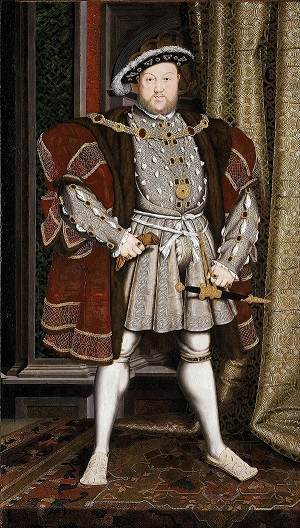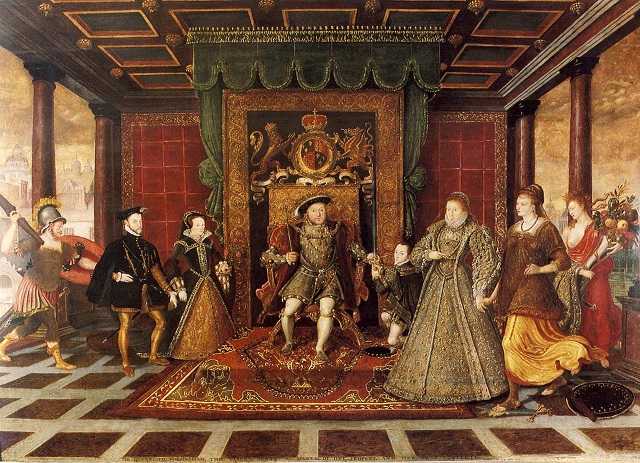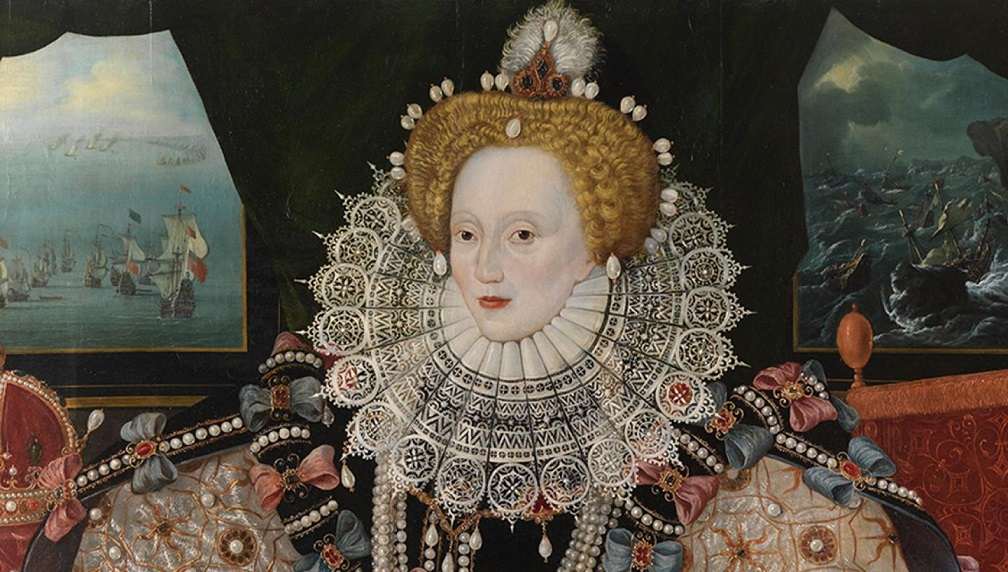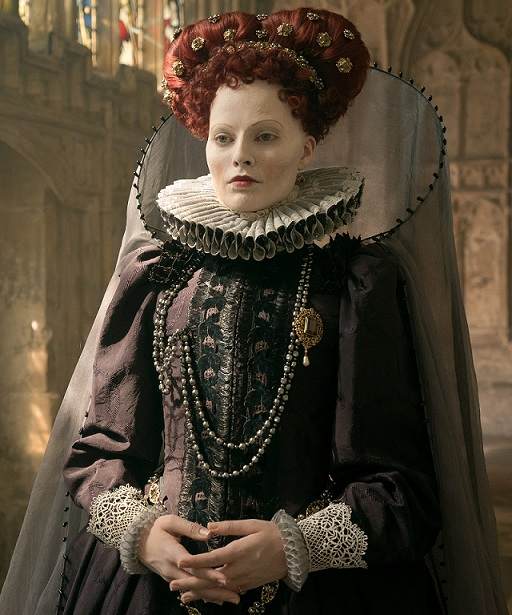Elizabeth-I, She reigned in England for forty-four years without ever having the audacity to wed or have kids. The monarchy was scheduled to transfer to another dynasty after her death, but she obstinately refused to get married. What was she trying to conceal?
In addition to being pleased with his triumph, Henry VII, the first king of the Tudor dynasty, was also filled with doubts when he raised from the dirt in 1485 the crown of his forefather, who had been murdered at the battle of Bosworth. The future and security of the nation rested on a number of variables, including the fertility of his wife and the pretenders who lurked around every corner.
He had to struggle with the first issue for a while, but he was fortunate with the second one. The succession to the kingdom was ensured by the births of his two sons and two daughters by Queen Elizabeth of York. In the end, as Henry VII’s firstborn, Arthur, passed away at the age of sixteen, the English crown was inherited by his youngest son and namesake.

Unfortunately, Henry VIII failed to conceive a male child far more severely. Only two of his daughters, Mary and Elizabeth, survived his first twenty-eight years of rule, and only his third wife gave birth to a son, Edward. As a result, they each succeeded to the throne and passed away without having children.
Mary spent the final few years of her life trapped in an unpleasant marriage, fighting mainly with imagined pregnancies. Edward died at the age of sixteen, never even getting the chance to meet his wife. Only Elizabeth, who ascended to the throne at the young and active age of 25, gave her subjects reason to believe that the Tudor succession would continue and that her father and grandfather’s peace would continue in this world.
Why did she pass up this chance to get married and remain a virgin queen for the entire world?
Mysterious Beasley Boy
No matter when they ruled, royal families have consistently been the subject of rumours. The same was true of the Tudors, who frequently provided the public with material for untold stories on top of everything else. The same applied to Queen Elizabeth, who obstinately turned down requests for her hand. Naturally, myths and traditions arose over time to try to explain this peculiar conduct at the time. Was there any connection between them and reality, one may wonder?

The queen found it surprising that her behaviour suggested that she should care for her children even more, as it was still a well-established belief in the 16th and 17th centuries that a woman should marry and have children.
Since the question of why she made this choice arose, there is also an explanation for it. Maybe Queen Elizabeth wasn’t a woman after all. What if a guy assumed the role of Henry VIII’s daughter to rule England?
The beginning of the entire tale is generally accepted to have occurred in the late 1640s, when Elizabeth was only ten years old and England was once again afflicted by an outbreak of the so-called “English sweat,” a disease that struck suddenly and could render even the healthiest and strongest person helpless for one day.
It was imperative to safeguard the monarch and his children because people were perish practically everywhere. Most likely, the young princess was brought to Bisley, where she had to endure the worst weather before travelling back to London. Hence the myth that persists among Bisley’s residents today.
Elizabeth liked her peers because she needed a companion, but it’s impossible to tell which male the princess hung out with during her free time. Elizabeth passed away as a result of a catastrophic accident that happened during one of these games.
The terrified servants were being led by Elizabeth’s guardian, Kat Ashley, but they were in a pickle because the monarch was on his way to Bisley’s estate and they had no idea what to do. The decision was made in a hurry to replace Elizabeth with someone else, and a friend of the girl who, incidentally, was extremely similar to her came to the rescue.
It goes without saying that panic and anxiety are not the best counsellors. The king was presented with a slim, red-haired lad wearing a princess gown, but the monarch didn’t seem to notice the small nuances or recognize the stranger in what was supposed to be his own daughter.
There are so many macho abilities
Even though the entire tale sounds unbelievable in modern times, the legend has in fact become an essential element of local lore. Every May 1st, it has been customary to dress up young boys as girls in Elizabethan-era garb in remembrance of the boy who replaced the princess and went on to become Queen of England. This practice dates back hundreds of years.
It turns out, though, that this fairly crazy hypothesis is supported by more than just the fact that Elizabeth never opted to get married. The queen reportedly enjoyed activities that were not particularly feminine, including horseback riding and hunting.
She also started applying a tonne of makeup to her face very early on, which was intended to cover up the smallpox scars and enhance the queen’s beauty. She may have concealed other changes, such as a beard and more obvious masculine features, over time.

Puffy costumes with high openings on the top or collars that protect the neck and Adam’s apple are another defense. Elizabeth’s abnormally lengthy fingers, which many people thought were masculine-looking, were covered by a variety of rings.
Elizabeth’s increasingly bizarre appearance, coupled with her categorical rejection of marriage and the well-known remark that she knows she has “the heart and stomach of the King of England” before the battle with the Spanish Armada, raises the possibility that she may be concealing some information. Or was it just her subjects’ overactive imaginations?
Royal victim of a genetic disease
Dr. Rita Baykan undertook a thorough medical investigation in 1985 as a result of rumours and stories surrounding Queen Elizabeth I’s sexual ehavior. She hypothesised that the monarch might actually have androgen insensitivity syndrome, also known as Morris syndrome, a rare genetic disorder that causes a child to be born with traits from both sexes.
Eventually, the female genital organs are initially visible in this situation, while the male ones only gradually emerge over time. In actuality, the patient is genetically male and possesses both X and Y chromosomes. If Dr.Rita Beykan was correct, it should not have surprised anyone when it was determined that the child born to Anne Boleyn and Henry VIII was a female. The absence of a female reproductive system and other anomalies would only be discovered by a more thorough gynaecological examination, which was not feasible at the time.
Morris syndrome doesn’t exhibit any significant exterior alterations for a very long period, so it doesn’t raise any alarm. The superficial appearance of those with this illness is typically defined by a tall and slender physique, as well as long legs and somewhat larger than normal hands. These individuals look like regular, frequently quite lovely ladies.
Elizabeth-I fully match this description. Elizabeth was rumoured to have gone bald in her early thirties, so it’s possible that something happened that led to her desire to conceal your true face based on the sudden changes in the Queen’s appearance and her preference for very heavy makeup, false dresses, and wigs (Elizabeth was said to have gone bald in her early thirties).
Is it therefore feasible that one of England’s most well-known queens was genetically male and had a dark secret that prevented her from engaging in more intense sexual activity with men? To settle the debate over whether Elizabeth I was an independent woman, a person with a genetic condition, or a boy who was drawn into a sinister plan and became a woman, only an exhumation might offer a solution.
unwillingness to get married
After putting up these hypotheses, it is necessary to take another, simpler one into consideration. Perhaps the queen, who didn’t at all avoid male company, was repulsed by more committed partnerships.
It cannot be denied that when Princess Elizabeth grew older, she lacked positive marriage role models. Six marriages later, her father never experienced a good union. Most of them had catastrophic endings for the women involved—at best, divorce; at worst, death on the scaffold; or a challenging delivery. Both the king’s fifth wife, Catherine Howard, and her own mother, Anne Boleyn, were executed after being charged with treason.
Although it is true that Edward’s mother, Jane Seymour, gave birth to him, she passed away just a few days later, leaving the entire court in despair and driving Henry into yet another unhappy union. Elizabeth’s erroneous perspective on relationships with men, her perception of them as dictators, and her desire to avoid experiencing what her mother and future stepmothers went through are not surprising.
The worry that her power would be usurped was another issue. The pressure to find a husband didn’t go away when Elizabeth ultimately became queen, but even if she did, she wouldn’t be able to please everyone. Some of her recommendations called for marriage, some to a native spouse, and Elizabeth saw risk in both of these scenarios.
She anticipated that the man seated next to her on the throne would attempt to usurp her authority and relegate her to the motherly position she was already required to fill. The difficulties of pregnancy, the drama of childbirth, and the spectre of an uncertain afterlife are some more of the queen’s worries.
The cherry on top was the conviction that, even if she lived, her child would always be in her shadow and would likely only need to wait for Elizabeth to die in order to take the throne. The queen claimed that she was unable to love someone who was patiently waiting for her to pass away. One may only read theories regarding the fairly enigmatic life of Queen Elizabeth I because it is difficult to know the truth now. The naïve queen took whatever the truth was with her.
Shiny Dixit Biography: Journey of the Rising Star!
Get ready to dive into the fascinating world of Shiny Dixit, where laughter meets talent…
19 Surprising Most Difficult Philosophical Questions to Answer
Sometime Philosophy is to answer the most difficult philosophical questions, and sometimes it is the…
Alerts before a long trip, 5 emergency situations for long viator
Many people travel by themselves by car or any other vehicle. Before a long-trip journey…
“Good night, Malaysia”, Mysterious disappearance of MH370
In 2014, East Asian airspace surprised the world in a way that has yet to…
Who is Shubhangi Atre ?
Indian television actor Shubhangi Atre is famous for her roles in Hindi TV series. She…
Why don’t I Dream anymore after Sleeping?
Having dreams means that you are in deep sleep and your mind is constantly weaving…







